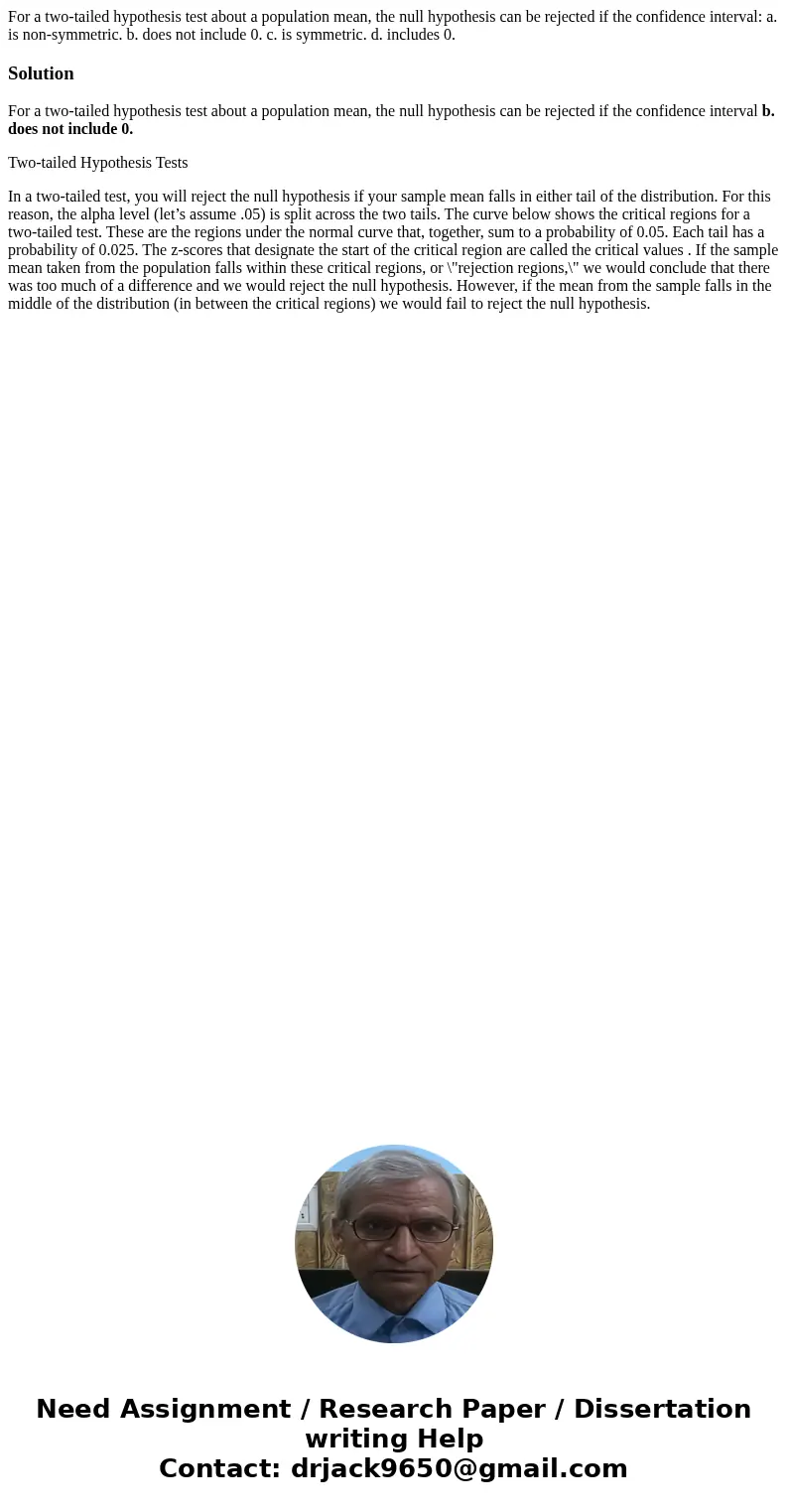For a twotailed hypothesis test about a population mean the
For a two-tailed hypothesis test about a population mean, the null hypothesis can be rejected if the confidence interval: a. is non-symmetric. b. does not include 0. c. is symmetric. d. includes 0.
Solution
For a two-tailed hypothesis test about a population mean, the null hypothesis can be rejected if the confidence interval b. does not include 0.
Two-tailed Hypothesis Tests
In a two-tailed test, you will reject the null hypothesis if your sample mean falls in either tail of the distribution. For this reason, the alpha level (let’s assume .05) is split across the two tails. The curve below shows the critical regions for a two-tailed test. These are the regions under the normal curve that, together, sum to a probability of 0.05. Each tail has a probability of 0.025. The z-scores that designate the start of the critical region are called the critical values . If the sample mean taken from the population falls within these critical regions, or \"rejection regions,\" we would conclude that there was too much of a difference and we would reject the null hypothesis. However, if the mean from the sample falls in the middle of the distribution (in between the critical regions) we would fail to reject the null hypothesis.

 Homework Sourse
Homework Sourse